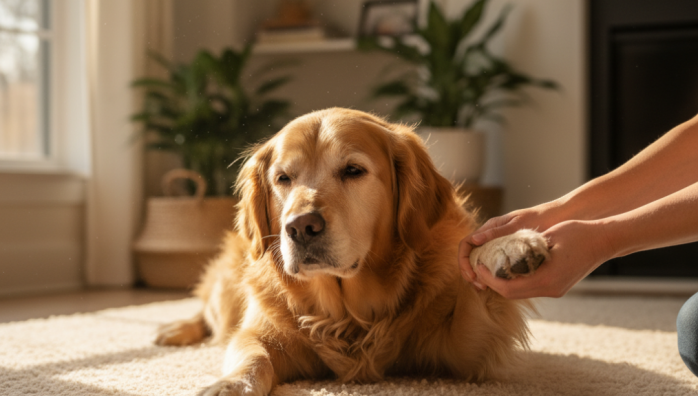Gentle Exercise Strategies for Senior Pets
by admin in Pet Care Basics 19 - Last Update November 21, 2025

Watching my best friend slow down was one of the hardest things I’ve gone through as a pet owner. That boundless puppy energy had been replaced by slower, more deliberate movements and longer naps. For a while, I was honestly scared to exercise him, fearing I’d cause more pain. But I learned that the goal isn\'t to stop moving; it\'s to move differently. Shifting our mindset from \'exercise\' to \'gentle movement\' was a game-changer for his comfort and my peace of mind.
Why gentle movement is non-negotiable for seniors
It\'s a misconception that older pets should just rest all day. In my experience, inactivity can actually make things worse. Consistent, gentle movement helps maintain muscle mass, which supports their creaky joints. It also keeps those joints lubricated and can significantly improve their mood and cognitive function. Think of it as a way to keep their body and mind engaged, just on their own terms.
The \'sniffari\': a walk for the mind
One of the best changes I made was turning our walks into \'sniffaris\'. Instead of focusing on distance or pace, I let my dog lead with his nose. We\'d go for shorter, 10-15 minute strolls two or three times a day. He would spend ages investigating a single blade of grass, and that was perfectly fine. This mental stimulation is just as tiring and far more enriching for a senior pet than a brisk, forced march. It became his way of reading the daily news, and he was always so content afterward.
Low-impact activities for aging joints
Finding activities that didn\'t put stress on his hips and elbows was my top priority. Here are a few things that worked wonders for us:
- Swimming or water walking: If you have access to a safe body of water or a pet hydrotherapy center, this is golden. The buoyancy of the water supports their weight, allowing them to move their joints through a full range of motion without impact. I always recommend checking with your vet first to ensure your pet is a good candidate for this.
- Indoor scent games: On bad weather days, I\'d hide low-calorie treats around a room for him to find. It engaged his powerful sense of smell, got him moving gently, and was a fun bonding activity for both of us.
- Puzzle toys: A food puzzle doesn\'t just provide a meal; it provides a mental workout that encourages small, gentle movements as they nudge and paw at the toy.
Knowing when to stop
This is probably the most important lesson I learned. You have to become an expert in reading your pet\'s subtle cues. For us, signs that he\'d had enough included lagging far behind, excessive panting, a lowered tail, or any sign of limping. The moment I saw any of these, our activity was over. It\'s always better to end on a good note, five minutes too early, than to push them one minute too long. Our golden years together are about quality, not quantity, of movement.
Remember, every pet is an individual. These are the strategies that helped my old friend stay comfortable and happy in his senior years, but it\'s crucial to have a conversation with your veterinarian. They can help you create a tailored movement plan that\'s perfect for your pet\'s specific health needs.














